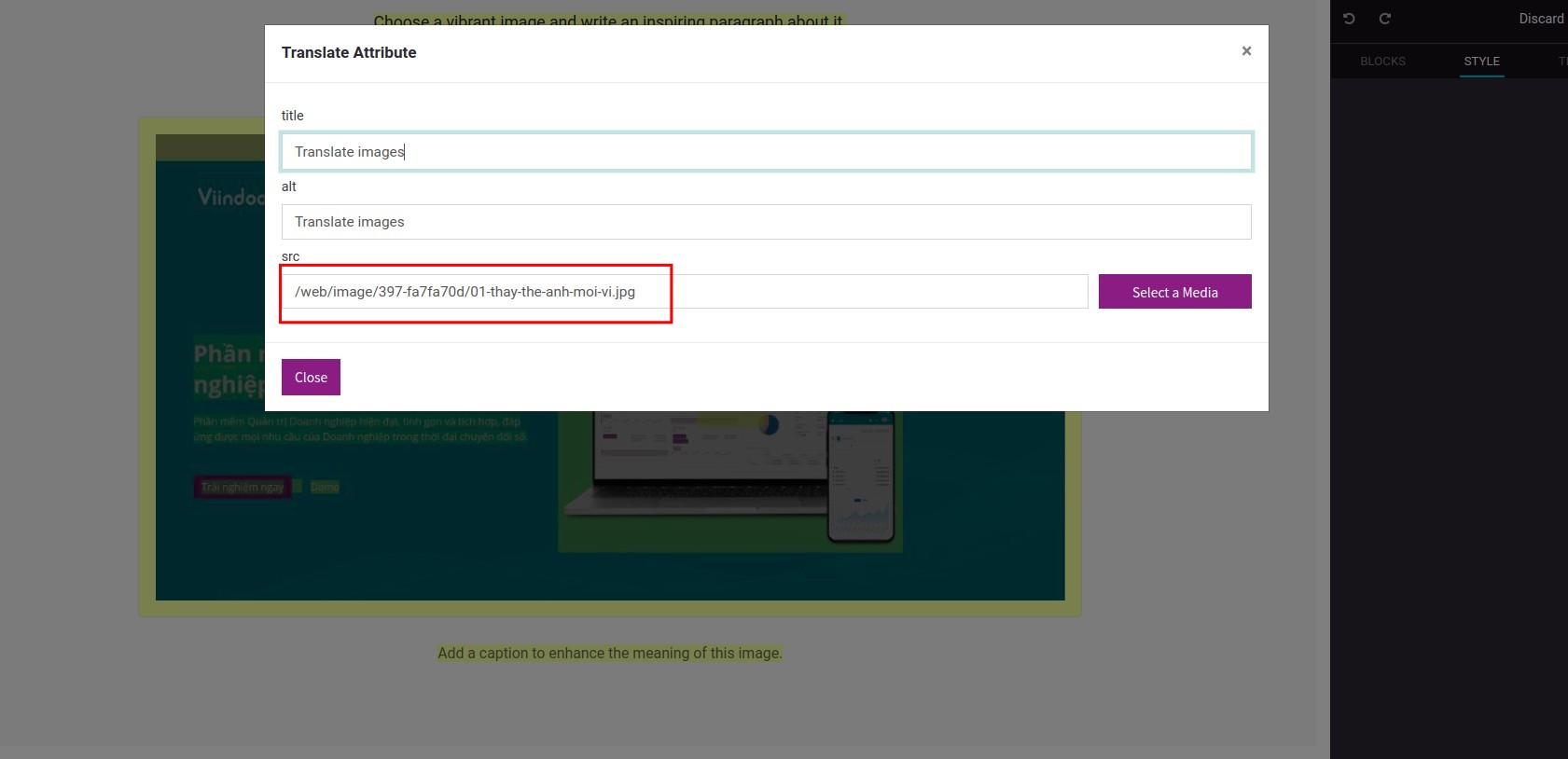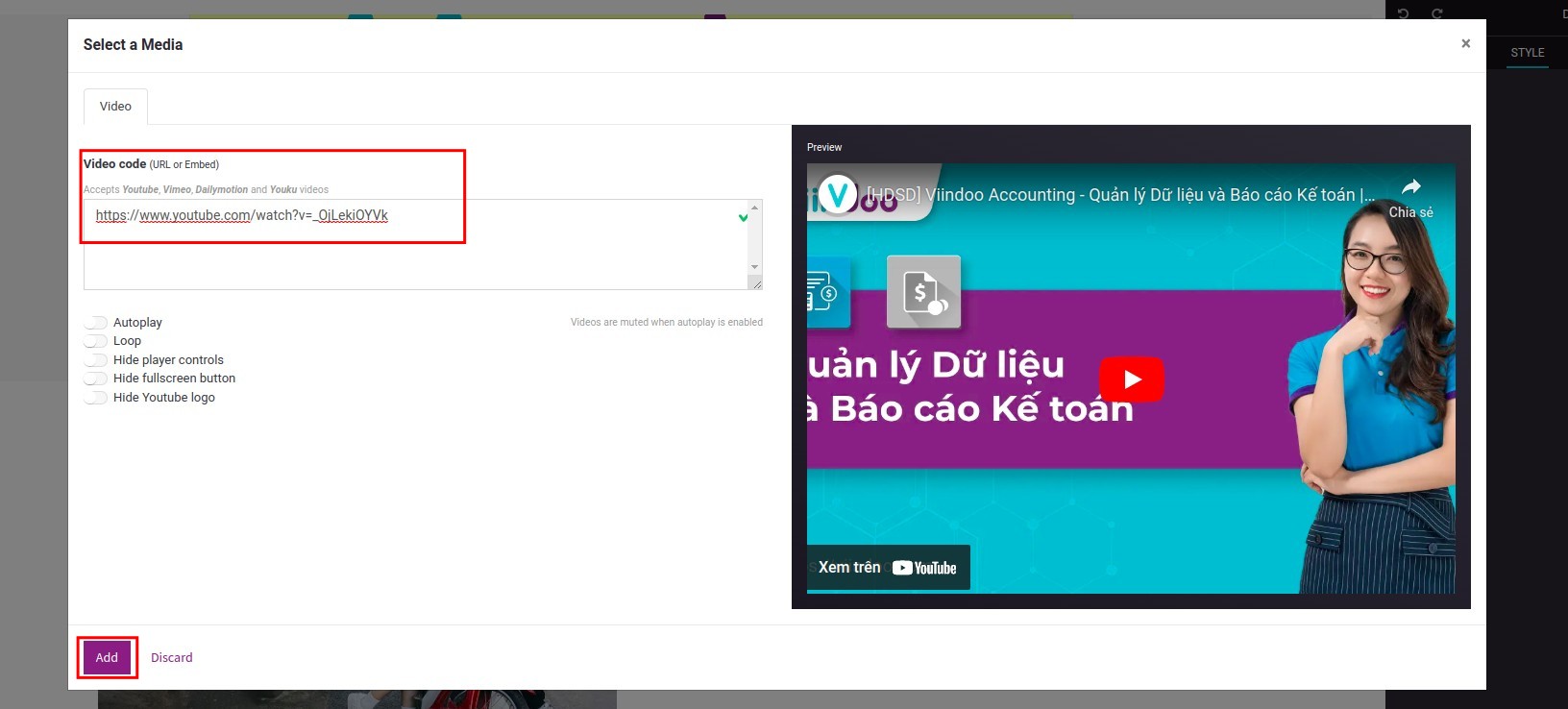Demo video: Website media translator
The Website media translator is a powerful tool designed to optimize your multilingual website for both users and search engines.
With Google SEO in mind, this module ensures your images, videos, and links are not only translated but also indexed correctly for each supported language, improving your website's visibility and engagement across global audiences.
Key Features
- Image translation: Replace and localize images for different language versions of your website, ensuring your visuals align with the translated content and keywords.
- Video translation: Manage localized video URLs for platforms like YouTube, Vimeo, Dailymotion, and Youku. Both direct links and iframe embeds are supported, ensuring compatibility with search engine crawlers.
- Link/URL translation: Translate and localize links for different language versions, allowing you to redirect users to language-appropriate resources and improve SEO consistency.
- SEO-friendly multimedia and links: Automatically align translated multimedia and links with the appropriate language metadata for better indexing by search engines.
- Integrated workflow: Seamlessly translate multimedia and links during your page translation process without additional steps.
Benefits
- SEO optimization: Enhance your website’s SEO performance by providing translated multimedia and links that align with localized keywords and metadata.
- Improved user experience: Deliver consistent, culturally relevant multimedia content and links that resonate with your audience.
- Professional global presence: Present a cohesive, polished website across all supported languages to establish trust and credibility.
Who Should Use This Module?
This module is essential for businesses, e-commerce platforms, or organizations managing multilingual websites that want to maximize their global SEO strategy and user experience.
Editions Supported
- Community Edition
- Enterprise Edition
Installation
- Navigate to Apps.
- Search with keyword viin_website_multilingual_multimedia.
- Press Install.
Instruction
Instruction video: Website Multilingual Multimedia
In the process of translating the content of the website, you should put images and videos suitable for the language to be translated. The viin_website_multilingual_multimedia application will help you:
1. Translate the images (by selecting other images while translating the page)
To translate the content of the website and images, you need to change the default language of the website to the language to be translated by hovering the mouse to the bottom of the web page, selecting the language and clicking the TRANSLATION button on the top menu bar of the website. You select each image to appear in the Translate Attribute window and replace the image by pressing Select a media and uploading a new image instead.

Translate the videos (by selecting other videos while translating the page)
Similar to image translation, after clicking translate and selecting the video to be replaced, the system will display a window Select a media for you to paste the new video link.

This software and associated files (the "Software") may only be
used
(executed, modified, executed after modifications) if you have
purchased a
valid license from the authors, typically via Odoo Apps,
or if you
have
received a written agreement from the authors of the
Software (see the
COPYRIGHT file).
You may develop Odoo modules that use the Software as a library
(typically
by depending on it, importing it and using its
resources), but
without
copying any source code or material from the
Software. You may distribute
those modules under the license of your
choice, provided that this
license
is compatible with the terms of
the Odoo Proprietary License (For
example:
LGPL, MIT, or proprietary
licenses similar to this one).
It is forbidden to publish, distribute, sublicense, or sell
copies of the
Software or modified copies of the Software.
The above copyright notice and this permission notice must be
included in
all copies or substantial portions of the Software.
THE SOFTWARE IS PROVIDED "AS IS", WITHOUT WARRANTY OF ANY KIND,
EXPRESS OR
IMPLIED, INCLUDING BUT NOT LIMITED TO THE WARRANTIES OF
MERCHANTABILITY,
FITNESS FOR A PARTICULAR PURPOSE AND
NONINFRINGEMENT. IN NO EVENT
SHALL THE
AUTHORS OR COPYRIGHT HOLDERS
BE LIABLE FOR ANY CLAIM, DAMAGES OR OTHER
LIABILITY, WHETHER IN AN
ACTION OF CONTRACT, TORT OR OTHERWISE,
ARISING
FROM, OUT OF OR IN
CONNECTION WITH THE SOFTWARE OR THE USE OR OTHER
DEALINGS IN THE
SOFTWARE.



